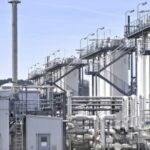Energy News Beat
Last April, Germany shut down its last three nuclear power stations, marking the end of the country’s atomic age.
Berlin has unveiled plans to spend €16 billion on 10 gigawatts (GW) of new gas-fired power plants in a major overhaul of the country’s energy grid.
Germany is also abandoning its short-lived love affair with coal.
Last April, Germany shut down its last three nuclear power stations, marking the end of the country’s atomic age. The controversial decision came at a time when Europe and the German public was beginning to warm up to nuclear energy in the wake of the continent’s energy crisis following Russia’s invasion of Ukraine.
“We will need more electric power in the future. That’s a fact. And 6% can be a lot to miss when there is nothing new [to replace it]. We’d be losing 6% when we really will need more,”German Chancellor Olaf Scholz told Deutsche Welle in 2022 shortly after the invasion.
Back then, Germany and scores of European nations were seriously rethinking their nuclear phaseout strategies with over 80% of the German public in favor of extending the lifespan of the country’s existing nuclear reactors. The Washington Post even reported that Germany was repairing coal mines and power plants that were mothballed for more than a decade in what was dubbed a “spring” for Germany’s coal sector. Previously, the country had set a goal to phase out coal-generated electricity by 2038.
But with Germany and Europe having little trouble securing ample new gas supplies, mainly from the United States, the country’s ruling coalition has suddenly changed its tune. Scholz is now adamant that “nuclear energy is over” and the issue is “a dead horse in Germany” after facing criticism from members of the Free Democrats party who warned that suddenly ditching nuclear energy would only lead to burning more fossil fuels. “Anyone who wanted to build new nuclear power plants would need 15 years and would have to spend €15-€20 billion each,” Scholz went on. Two years ago, German politicians vehemently denounced the opposition’s and the EU’s attempt to label nuclear energy as sustainable.
Well, Scholz’s critics were right on the money. Berlin has unveiled plans to spend €16 billion on 10 gigawatts (GW) of new gas-fired power plants in a major overhaul of the country’s energy grid. The governing coalition has announced that the new strategy is “in addition to the consistent expansion of renewable energies,” and is key to providing steady power supplies “even in times where there is little sun and wind.” The government has touted the fossil gas power plants as “modern, highly flexible and climate-friendly” because they will, subsequently, be converted to run on hydrogen in the mid-to-late 2030s. State-owned, multinational energy company Uniper has lauded the move, saying that “swift action is urgently needed because the approval process and the actual construction of power plants and storage facilities will take several years.“Germany is now a leading advocate phasing out nuclear energy at an EU level.
As you might expect, environmental groups have come out swinging, with Greenpeace denouncing the strategy as a “perfect example of how the hype around hydrogen is just a smokescreen for more fossil gas.”
On a purely emissions standpoint, nuclear energy is cleaner than natural gas because It produces zero carbon emissions; the lifecycle emissions of nuclear energy are significantly lower than in gas-based generation and it also doesn’t produce other noxious greenhouse gasses. Unfortunately, several high-profile nuclear accidents including Three Mile Island, Chernobyl and Fukushima will probably remain etched in the public psyche for decades, if not centuries, to come making nuclear power the indelible dark sheep in the global energy mix. Natural gas is viewed much more favorably.
Back To Renewable Energy
Germany is also abandoning its short-lived love affair with coal. Last year, the country’s giant power firm, LEAG, announced it will convert its lignite-fired thermal power plants into Europe’s largest green energy hub, with a capacity between 7 GW and 14 GW. LEAG has a target to install between 7 GW and 14 GW of wind and solar energy capacity; 3 GWh of storage capacity and 2 GW for green hydrogen production in the Lusatia region in Eastern Germany by 2040.
But Germany is hardly the only European nation that has rekindled its hatred for ‘dirty’ fossil fuels. French energy giant Engie recently announced plans to build a 500 megawatt gas plant near the city of Nijmegen in the Netherlands on the site of a former coal-fired generator. Engie says the facility will be a “hybrid plant” and could be powered by hydrogen in the future.
The United States’ natural gas and LNG bonanza is certainly helping Europe turn its nose up on carbon-heavy fossil fuels: With exports averaging 11.6 billion cubic feet per day (Bcf/d) during the first half of 2023, and ~70% of exports going to Europe and much of the balance to Asia, the U.S. is now the world’s largest LNG exporter.
ENB Top News
ENB
Energy Dashboard
ENB Podcast
ENB Substack
The post Germany To Replace Nuclear With Natural Gas Plants for $16B appeared first on Energy News Beat.








